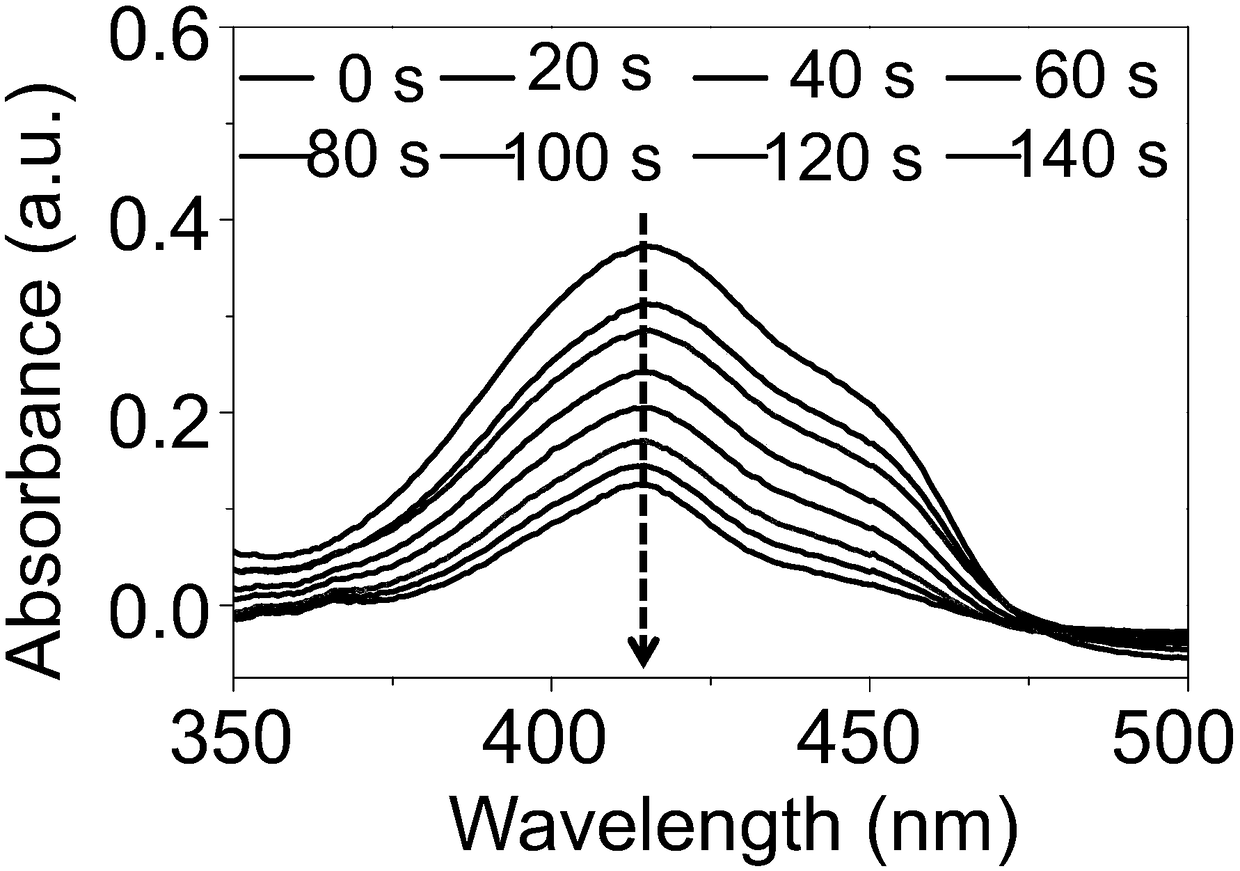Antitumor application of covalent organic framework material
A covalent organic framework and tumor technology, which is applied in the field of tumor treatment, can solve the problems of decreased ROS production capacity, inability to direct intravenous injection, and decreased ROS capacity, and achieve the effects of enhancing ROS capacity, prolonging life, and increasing exposure
- Summary
- Abstract
- Description
- Claims
- Application Information
AI Technical Summary
Problems solved by technology
Method used
Image
Examples
Embodiment 1
[0106] Preparation of Covalent Organic Framework Materials with Heterostructures
[0107] (1) Under anhydrous and oxygen-free conditions, the donor (2,3,6,7,10,11-hexahydroxytriphenyl, 2 equivalents) and the acceptor (5,15-Bis(4-boronophenyl)porphyrin, 3 equivalents) in acetonitrile / mesitylene (7:3), the reaction temperature is 80-150°C, the reaction time is 2-5 days, and the solid product obtained is washed with toluene until the liquid is colorless. The solvent is removed by heating under vacuum, the temperature is selected as 80-120°C, and the time is selected as 12-48h.
[0108] (2) Add the obtained solid powder (3-6 mg) into water, PBS, serum (6 mL) and ultrasonically disperse to obtain a nano-sized covalent organic nanosheet dispersion (0.5-1 mg / mL).
Embodiment 2
[0110] The covalent nanosheets of covalent organic framework materials prepared in the examples of the present invention were characterized.
[0111] Material particle size and potential measurement
[0112] A PBS-dispersed covalent organic nanosheet dispersion (0.1 mg / mL) was prepared, followed by measurement of particle size and potential.
[0113] see figure 1 , figure 1 The particle size distribution and potential diagram of the heterostructure covalent nanosheets prepared in Example 1 of the present invention.
[0114] Such as figure 1 As shown, the particle size of the heterostructure covalent nanosheet is about 350nm, and the potential is -37mV, which is beneficial to realize the intravenous injection of the nanosheet.
[0115] see figure 2 , figure 2 Electron micrographs of heterostructure covalent nanosheets prepared in Example 1 of the present invention.
Embodiment 3
[0117] The photodynamic properties of the covalent organic framework material covalent nanosheet material prepared in the embodiment of the present invention were evaluated.
[0118] 1,3-Diphenylisobenzofuran (DPBF) was used to detect the production of ROS, DPBF (50 μL, 1 mM)
[0119] Added to the covalent organic nanosheet dispersion (3mL, 0.1mg / mL), using a laser (1W cm-2 , 635nm) radiate the mixed solution, and monitor the change of DPBF absorption by ultraviolet absorption.
[0120] see image 3 , image 3 Material-level photodynamic evaluation of covalent organic nanosheets prepared for the examples of the present invention. That is, under the light condition, the curve graph of the DPBF absorption intensity changing with the irradiation time.
[0121] Depend on image 3 It can be seen that this proves the generation of ROS.
PUM
| Property | Measurement | Unit |
|---|---|---|
| The average particle size | aaaaa | aaaaa |
| Concentration | aaaaa | aaaaa |
Abstract
Description
Claims
Application Information
 Login to View More
Login to View More - R&D
- Intellectual Property
- Life Sciences
- Materials
- Tech Scout
- Unparalleled Data Quality
- Higher Quality Content
- 60% Fewer Hallucinations
Browse by: Latest US Patents, China's latest patents, Technical Efficacy Thesaurus, Application Domain, Technology Topic, Popular Technical Reports.
© 2025 PatSnap. All rights reserved.Legal|Privacy policy|Modern Slavery Act Transparency Statement|Sitemap|About US| Contact US: help@patsnap.com



